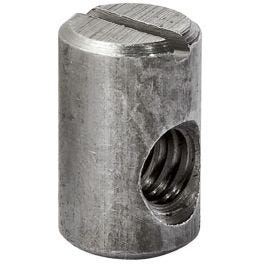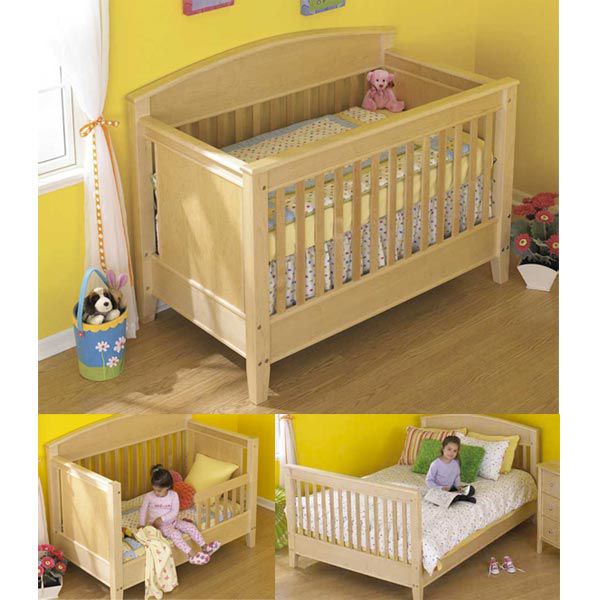My second grandson almost got a store bought crib today. I have his nearly done but have messed around for about 6 hours installing 8 barrel bolts. You drill a little over 3/8 hole one direction for the round nut and then a little over 1/4 the other direction for the bolt. I am not pleased with the plans I bought from Wood magazine either. They are very long but make important information very hard to find. This is one of those 3 in one beds that converts from a crib to a toddler bed to a full size bed. The barrel bolts attach the head board and foot board to the ends of the crib/toddler bed and they even have the holding the bed rails. I already ditched that dumb idea. I will cut in some bed rail fasteners if they want to use it as a double bed. Simple with a router jig and a better looking more secure connection.
In the span of 8 joints I've had a couple that went together easily and a couple that almost refused to go together at all. The others were in between these extremes. Due to the design, you have to drill half the holes on the completed crib which is a significant part of the problem. It only takes about a 1/16 dimensional issue, at the far end of the hole, for the bolts to be very difficult to put in. All the holes I could were drilled on the drill press before assembly. It is the others that I am struggling with - or was. It is together now. There are a few bumps and bruises that I need to sand out before finish but it is together.
My lessons learned are to think at least twice before buying any plans from Wood again. They are not cheap and are not good. And to never use barrel bolts again. Once assembled it is a strong joint and the fasteners are not overly expensive but they are just too fiddly for this old guy to mess with.
In the span of 8 joints I've had a couple that went together easily and a couple that almost refused to go together at all. The others were in between these extremes. Due to the design, you have to drill half the holes on the completed crib which is a significant part of the problem. It only takes about a 1/16 dimensional issue, at the far end of the hole, for the bolts to be very difficult to put in. All the holes I could were drilled on the drill press before assembly. It is the others that I am struggling with - or was. It is together now. There are a few bumps and bruises that I need to sand out before finish but it is together.
My lessons learned are to think at least twice before buying any plans from Wood again. They are not cheap and are not good. And to never use barrel bolts again. Once assembled it is a strong joint and the fasteners are not overly expensive but they are just too fiddly for this old guy to mess with.




